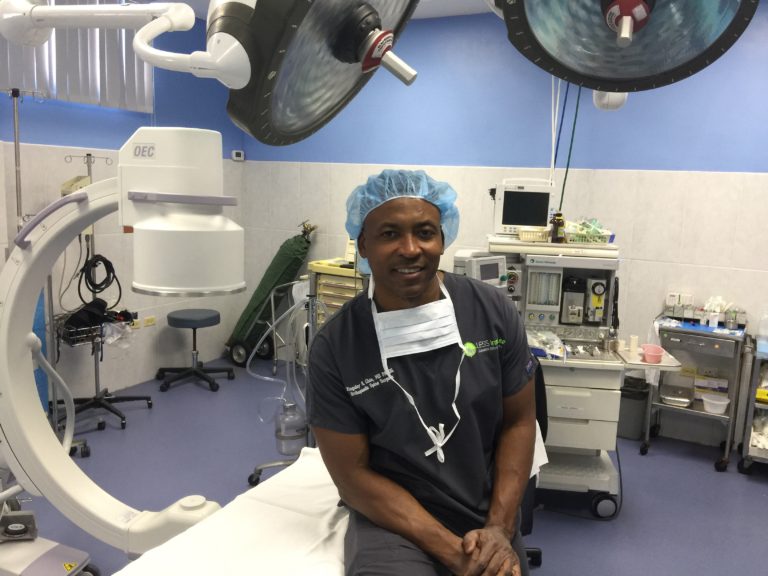By Dr. Kingsley Chin
Scientific Paper
Chin KR1, Ricchetti ET, Yu WD, Riew KD.
Interested medical professionals can read the full paper, as published in the Journal of Neurosurgery, here.
Abstract
Multilevel anterior cervical fusion often necessitates a large extensile incision for exposure and substantial retraction of the esophagus for placing long plates, potentially predisposing patients to complications such as dysphagia, dysphonia, and neurovascular injury. To the authors’ knowledge, the use of 2 incisions as an option has not been published, and so it is not intuitive to young surgeons or widely practiced. In this report, the authors discuss the advantages and raise awareness of using 2 incisions for multilevel anterior cervical fusion, and they document a safe skin bridge length. They also describe the advantages of using 2 incisions for performing multilevel anterior cervical fusion either at contiguous or noncontiguous levels as in adjacent-segment disease. By using the 2-incision technique, the authors made the surgery technically easier and diminished the amount of esophageal retraction otherwise needed through 1 long transverse or longitudinal incision. A skin bridge of 3 cm was safe.
Dr. Kingsley R. Chin, Founder of philosophy and practice of The LES Society and The LESS Institute
About Author Dr. Kingsley R. Chin
Dr. Kingsley R. Chin is a board-certified Harvard-trained Orthopedic Spine Surgeon and Professor with copious business and information technology exposure. He sees a niche opportunity where medicine, business and info. tech meet – and is uniquely educated at the intersection of these three professions. He has experience as Professor of Clinical Biomedical Sciences & Admissions Committee Member at the Charles E. Schmidt College of Medicine at Florida Atlantic University, Professor of Clinical Orthopedic Surgery at the Herbert Wertheim College of Medicine at Florida International University, Assistant Professor of Orthopaedics at the University of Pennsylvania Medical School, Visiting Spine Surgeon & Professor at the University of the West Indies, Mona, and Adjunct Professor of Clinical Biomedical Sciences at the University of Technology, Jamaica.
Learn more about Dr. Chin here and connect via LinkedIn.
About Less Exposure Surgery
Less Exposure Surgery (LES) is based on a new philosophy of performing surgery, leading the charge to prove through bench and clinical outcomes research that LES treatment options are the best solutions – to lowering the cost of healthcare, improving outcomes and increasing patient satisfaction. Learn more at LESSociety.org.
The LES Society philosophy: “Tailor treatment to the individual aiding in the quickest recovery and return to a pain-free lifestyle, using LES® techniques that lessen exposure, preserve unoffending anatomy and utilize new technologies which are safe, easy to adopt and reproducible. These LES®techniques lessen blood loss, surgical time and exposure to radiation and can be safely performed in an outpatient center. Less is more.” – Kingsley R. Chin, MD
About The LESS Institute
The LESS Institute is the world leader center of excellence in Less Exposure Surgery. Our safe, effective outpatient treatments help patients recover quickly, avoid expensive hospital stays and return home to their family the same day. Watch our patient stories, follow us on Facebook and visit TheLESSInstitute.com to learn more.
About SpineFrontier
The above study utilized LES Technology from SpineFrontier – leading provider of LES Technologies and instruments – offering surgeons and patients superior technology and services.
Scientific Paper Author & Citation Details
Authors
Chin KR1, Ricchetti ET, Yu WD, Riew KD.
Author information
Institute for Modern & Innovative Surgery, Fort Lauderdale, Florida, USA. kingsleychin@gmail.com



















